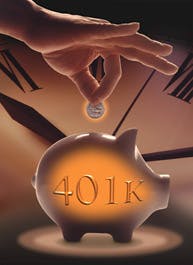New 401 (k) disclosures are coming; are your employees ready?
According to a recent AARP study, it’s not likely.
Some 71 percent of Americans who have a 401(k) don’t think they pay any fees. Is that true at your organization? What will your employees feel — about the value of their 401(k) plan, about your efforts to advocate for them, about transparency — if they find out in fact, there are embedded fees?
Come January 1, 2012, when your employees start to receive information about these fees — will you be shaping the employee response or reacting to it?
What you need to do
Here’s your quick to-do list:
- Create key messages about the fees in your plan. If you’re already paying them, great. Even if you have fees, they’re likely to be lower than what an employee would pay to invest in a regular brokerage account. See our suggestions for important message points.
- Remind employees that 401(k)s are great. We outlined the many reasons that 401(k)s are still the best deal in town last summer. Don’t risk diluting this big picture message, even if you aren’t picking up the full tab for investment fees.
- Synch up terminology. The model notice, as you might guess, contains valuable information in a dense, technical format.The terms used may or may not be aligned with the terms you’re using in your existing savings communication. Make sure you’re ready to translate.
- Get the message out. Now. The worst thing you can do is let you employees discover the 401(k) fees on their usually unopened statement. We’ve already been given extra time to implement. These disclosures were originally scheduled for July 2011, but have been pushed out till January 1, 2012. Get ahead of the game by planning for communication.
While this may seem like just another legal notice — employee engagement is at stake. You don’t need to spend enormous amounts of time on this, but you should invest the same thought as you do in increasing participation and worker retirement readiness.
The real scoop about 401 (k) fees
See these interesting statistics from the AARP study regarding 401(k) fees:
- When plan participants were asked whether they pay fees for their 401(k) plan, less than a quarter (23 percent) said that they do pay fees. Less than one in 10 (6 percent) said that they did not know whether or not they pay any fees.
- About three in five (62 percent) are unaware of how much they are paying in fees for their plans
- One-third (32 percent) said that they do not feel knowledgeable about the impact that fees could have on their total retirement savings. However, about four in five (81 percent) believe that the fees charged for investments are very important or somewhat important in decisions about their 401(k) investments.
- Respondents ages 25-49 (85 percent) were more likely than those ages 50 plus (80 percent) to state that the fees are very important or somewhat important in their decision-making.
- Three in 10 (30 percent) plan participants are aware of how much they are paying in fees and expenses for their 401(k) plan. Of those who are aware, about one-third (32 percent) do not know the percentage of how much they are paying in fees.
More 401 (k) facts
Other key highlights of the 401(k) study include:
- While most plan participants (63 percent) say that they have contributed money to their 401(k) plan, about one-fifth (22 percent) have withdrawn money or received payments from their 401(k) plan.
- Almost two-thirds (64 percent) said they prefer to make their own decisions about saving and investing. Some respondents said they have taken steps to learn more about their investments such as using the summary information or prospectuses about mutual funds or consulting with a personal financial advisor.
- When respondents were asked how confident they are about having enough money to live comfortably throughout their retirement years, almost three-quarters (74 percent) said that they are very confident or somewhat confident. Not surprising since most respondents (64 percent) report that they have tried to calculate how much money they will need to have saved by the time they decide to retire so that they may live comfortably in retirement.
